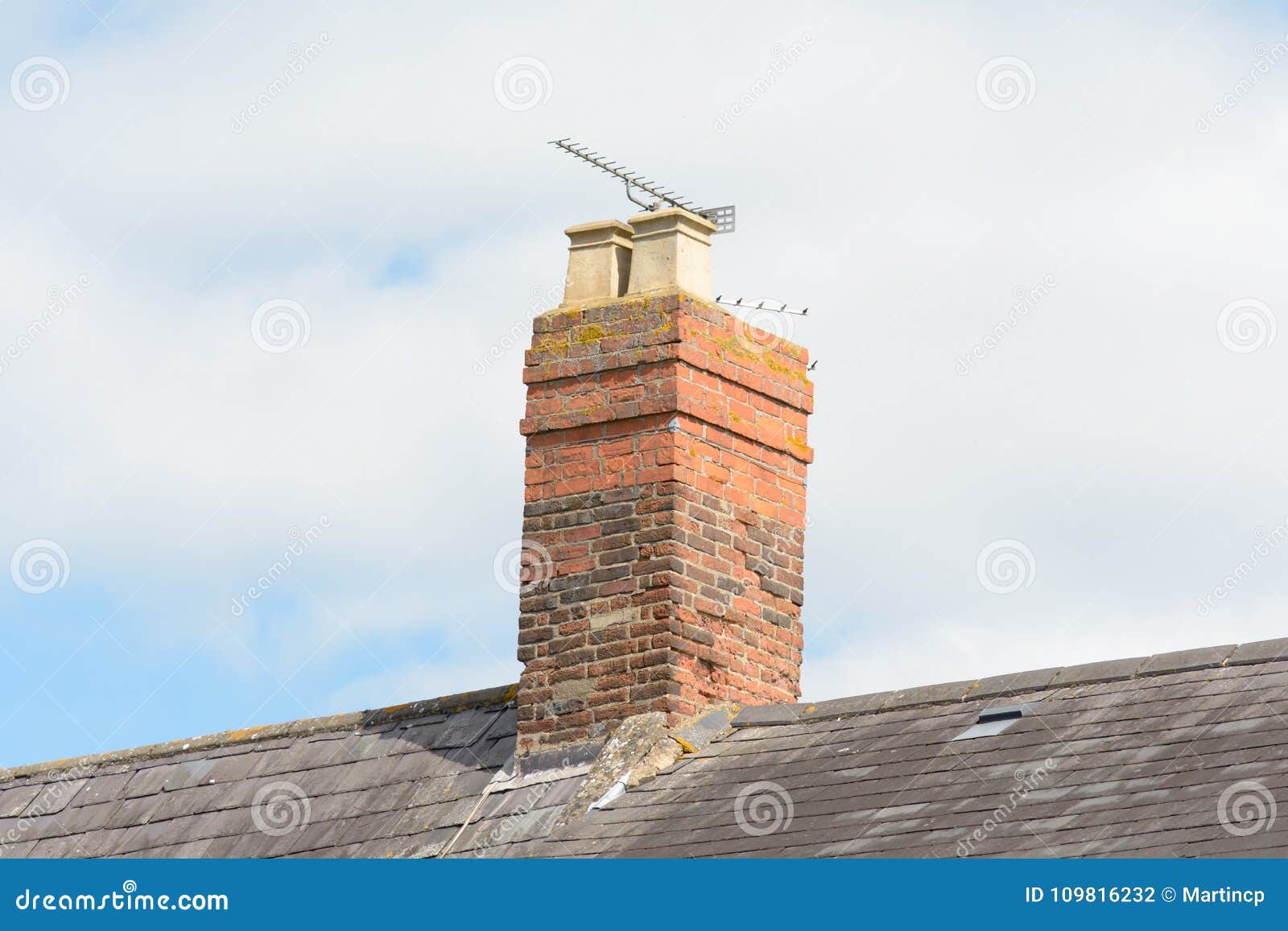

As a result, you will effectively save money, and protect your home and your family’s health by relaying this information to your chimney expert and tackling these problems sooner rather than later. Knowing the parts of a chimney will allow you to notice when an essential component becomes damaged or is no longer functioning. The parts of a chimney can be broken down into nine distinct categories: the bricks, the flue, the liner, the cap, the crown, chase cover, flashing, damper, and the smoke chamber. Having a basic understanding of the chimney parts and their functions will help you to be able to identify problems easily when they arise. I'm not sure how you can remedy your problem. In my experience almost all ingress of moisture in a chimney stack below roof level has been due to the lack of some sort of damp proof courses in the stack. While it is standard procedure to have your chimney inspected annually, issues could happen in between inspections. I think maybe your problem has something to do with the lead trays you say you left out when rebuilding the chimneys Keycare. After that, twist the Pit Boss smoke stack cap onto the chimney stack’s top. The screw will be secured to the cabinet’s self-clinching nuts on the inside. Secure the chimney stack to the top of the main cabinet with four screws from the outside. A malfunctioning chimney could mean a risk to the safety of your home and the health of your family. On the top of the main cabinet, look for the chimney aperture. In the winter months, your chimney and your fireplace are very important to the comfort of your home.

Although you may never be quizzed on the parts of a chimney, they are still helpful to know. The net acts as a physical barrier and is essentially the only guaranteed method to keep them out.Many homeowners are unaware of what makes up their chimney, as there is much more to it than a collection of bricks and a fireplace. This is a relatively discrete method of preventing the birds from nesting/loafing as far as the alternative options. If the netting isn’t installed correctly the birds will find a way in some way or another.
CHIMNEY STACK MENU INSTALL
However the netting would probably require the handy skill of a professional to install this correctly. Determine the number of Chimney Pipe lengths required.The chimney must extend at least 3 feet above the highest point where it passes through the roof, and be at least 2 foot higher than any part of the building within a horizontal distance of 10 feet (Figure 2). Netting can also be used on other areas of the roof at risk of birds nesting as show in the image below: Often after an area that was previously frequented by birds has been protected, the birds will simply move on to the next available area, sometimes on the same building. Here is an example of a ‘chimnetty’, note that the top of the chimney has also been protected using spikes: The cheapest option that we offer on our website would be either bird spikes or alternatively a visual deterrent, now the visual deterrent isn’t advised to be used where birds are nesting due to the level of the birds determination, once they’re comfortable they can be very hard to shift! The spikes are a very difficult one when it comes to the actual slope leading to the chimney stack as shown in the picture this is because if spikes are installed in the wrong way then they can act as the base for a nest which defeats the point of the spikes being put there in the first place.įor the birds nesting behind a chimney stack, it is a very common problem which can be easily solved with the installation of a ‘Chimnetty’ – no, that’s not the official name but we like it! A suitable sized net is attached between the roof ridge and the chimney using suitable fixings. This is one of the first things you should do when it comes to finding a solution or deterrent/preventative for your chimney or general bird problem.ĭepending on how much money you’re willing to spend to stop the birds coming back and nesting, it in turn determines what sort of solution you’re available to. It is wind protected, warm and also high up.Īs far as the legal side of different species of birds nesting goes it is best for you to ring your local council as they will know exactly whether you can remove the nest or not. For many, getting up to their chimney isn’t the easiest of tasks this is especially true when you are faced by a fully grown seagull protecting its young! Either the chimney pot itself or the slope of the roof connecting with the chimney is the perfect place for birds to make it home.
CHIMNEY STACK MENU HOW TO
If you are wondering how to deal with this you’ve come to the right place. Throughout the spring, summer and sometimes autumn, birds look for a new home to raise their young and for some, unfortunately, that home can be your chimney stack.


 0 kommentar(er)
0 kommentar(er)
